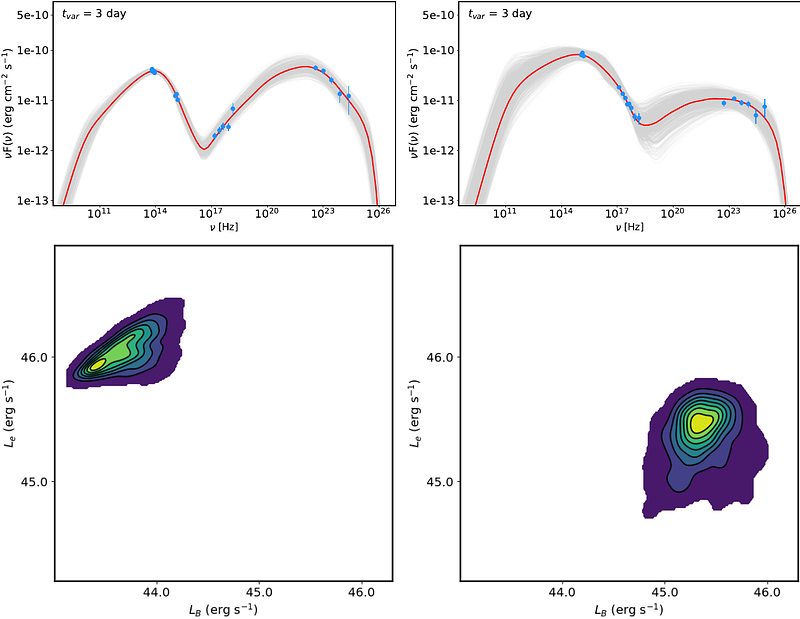Modeling of the time-resolved spectral energy distribution of blazar OJ 287 from 2008 to 2023: a comprehensive multi-epoch study

Modeling of the time-resolved spectral energy distribution of blazar OJ 287 from 2008 to 2023: a comprehensive multi-epoch study
G. Harutyunyan, N. Sahakyan, D. Bégué
AbstractWe present a comprehensive analysis of the time-resolved spectral energy distributions (SEDs) of the blazar OJ 287 over a 15-year period (2008-2023), using multi-wavelength data. In the $\gamma$-ray band, multiple flaring episodes were observed, with the strongest flare reaching a peak flux of $(5.60\pm1.11)\times10^{-7}\:{\rm photons\:cm^{-2}\:s^{-1}}$ on MJD 55869.03 (04 November 2011). In the optical/UV band, the source was in an active state between MJD 57360 (04 December 2015) and 57960 (26 July 2017), during which the highest flux of $(1.07\pm0.02)\times10^{-10}\:{\rm erg\:cm^{-2}\:s^{-1}}$ was observed on MJD 57681.23 (20 October 2016). In the X-ray band, both the flux and spectral index exhibit variability. To investigate the origin of the broadband emission from OJ 287, we systematically modeled 739 quasi-simultaneous SEDs using a leptonic model that self-consistently accounts for particle injection and cooling. This analysis is possible thanks to the recent development of a surrogate neural-network-based model, trained on kinetic simulations. This innovative, time-resolved, neural network-based approach overcomes the limitations of traditional single-epoch SED modeling, enabling to explore the temporal evolution of key model parameters, such as the magnetic field strength, Doppler factor, and electron injection distribution, across different states of the source. We identified distinct emission states characterized by unique combinations of magnetic field $ B $, electron index $ p $, and Doppler boost $ \delta $, associated to different underlying mechanisms such as varying acceleration processes (e.g., shocks, turbulence) and magnetic confinement. The analysis provides insights into the jet physics processes, including particle acceleration mechanisms and dynamic changes in the jet structure.